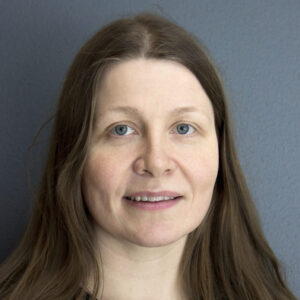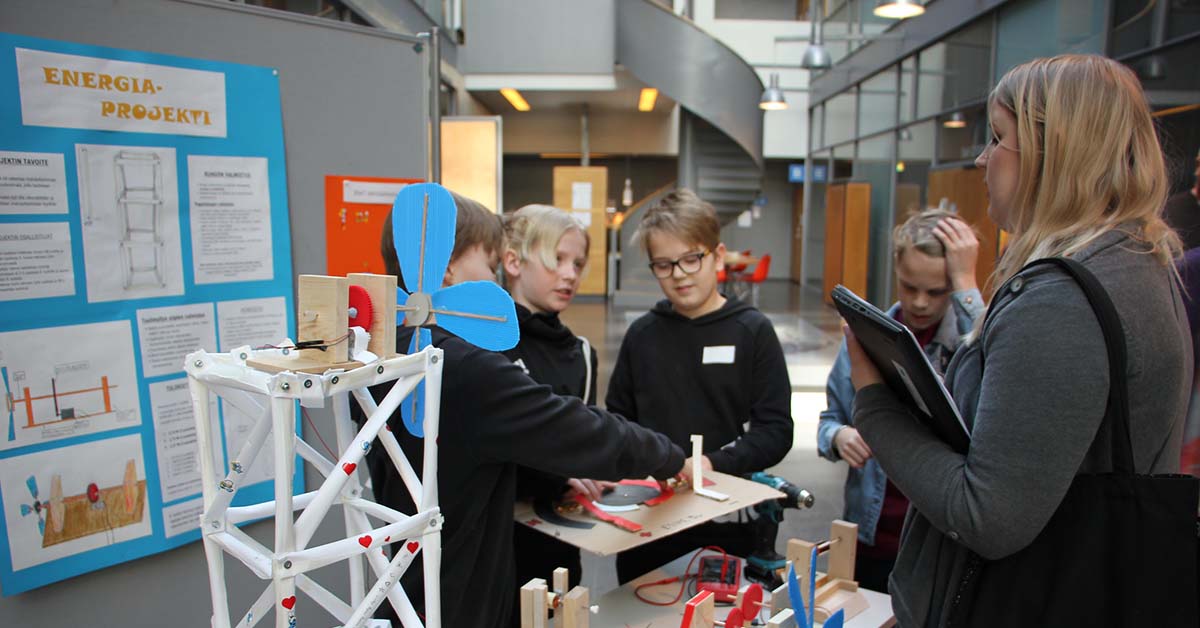Outi Haatainen, MSc, defended her doctoral thesis on integrated and collaborative science education on 29 April at the University of Helsinki. Through integrative teaching, teachers strive to construct curriculum content into meaningful wholes for learners. In her doctoral thesis, Haatainen has particularly investigated teachers’ perceptions of integrative teaching and their related experiences.
Integrative teaching has become part of the everyday life of all teachers through curricula both in Finland and elsewhere in the world. It has been brought to the fore in particular as a way of increasing the meaningfulness of science education.
“At the turn of the millennium, several extensive research reports were published, highlighting the fact that pupils are uninterested in the science education taking place in schools and don’t consider it meaningful. At the same time, we need to educate more broad-based experts in the natural sciences. Integrative teaching emerged as one of the ways to make science education more meaningful,” Haatainen says.
Haatainen has been interested in the topic for a long time.
“I wrote my master’s thesis on web-based materials for integrated education in 2014. Already then, I came across some very negative notions about the method. As a result, I became interested in how teachers could be supported in adopting integrative teaching methods.”
very negative notions about the method. As a result, I became interested in how teachers could be supported in adopting integrative teaching methods.”
Teachers must rethink their role
Teaching can be made integrative in many ways. For example, phenomenon-based teaching has long been a topic of discussion in Finland, with project-based learning added to the mix later on. Key to both are meaningful teaching practices and content, their linking with pupils’ everyday life, and the teaching of central concepts and skills associated with the school subject. In fact, a range of terms are used to refer to integrative teaching, which, according to Haatainen, affects teachers’ views.
“It’s difficult to assess the success of integrative teaching without a shared understanding of the meaning of the concept.”
Integrative learning methods also require a new kind of attitude and role from teachers: instead of traditional teaching, the teacher’s role is to support pupils in their learning. The current way of teaching provision, particularly in lower secondary school and upper secondary education, does not support integrative teaching or project-based learning.
“In lower secondary and general upper secondary school, the natural sciences are taught as separate subjects or learning modules in different courses. This limits the opportunities to organise integrated education, which includes as an essential element cross-subject entities and collaboration. In many ways, integrated education is indeed easier to implement in primary school where subject boundaries are less strict and the same class teacher is primarily in charge of teaching in different school subjects,” Haatainen notes.
Support needed for adopting new methods
Teachers need support and training to be able to carry out integrative teaching successfully. Haatainen points out that support often also has a positive impact on teachers’ views on the practice.
“When teachers are supported in adopting new teaching methods, they have the opportunity to avoid the most common challenges associated with integrative teaching. If teachers start to implement integrative teaching without a more precise understanding of the relevant factors, the assigned learning outcomes may not be achieved.”
In addition to assuming a new role, teachers need support and training in, among other things, assessing integrative teaching, collaborating and supporting pupils. Besides these pedagogical skills, there is a demand for subject-specific training focused on including knowledge and skills central to specific subjects in integrated education.
However, in many ways integrated education has consolidated its status in teaching since 2016, when the integrative approach was recorded in the principles of the curricula for basic education.
“We collected the first dataset at the end of 2015, at which point there was still a lot of uncertainty: teachers were unclear about the meaning of integrated education. Since then, many teachers have formed at least some kind of notion of integrated education after getting the chance to put it into practice in the classroom.”
Read more
- Explore the doctoral thesis
- StarT programme supports teachers in the implementation of integrative project-based learning
Text: Jasmin Kopra
How to get started with integrated education?For teachers interested in integrative teaching methods, Haatainen offers a few tips: 1.In the case of integrated education, you should start from small. Instead of trying to adopt a large whole, you should include a handful of elements in your teaching and test their suitability. This way, pupils will gradually become familiar with new ways of working. 2.Familiarise yourself with currently available material. 3.Open your mouth in the teachers’ room. Do not hesitate to ask whether a colleague would be interested in engaging in planning and implementation. It is easier to implement new teaching methods together. |
Share:


